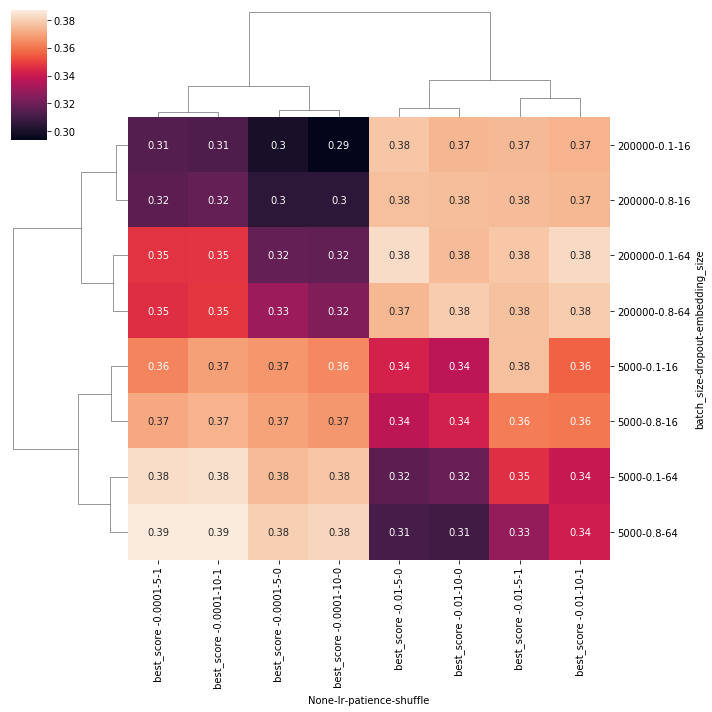Converting a DecisionTree into python code
It is sometimes useful to be able to convert a decision tree into and actual useful code snippet. This notebook shows how you’d go around to achieve this.
We will use as an example, the iris dataset (which is a toy example and not really that interesting but sufficiently interesting that we can show a usable final result and make a point).
We will take the dataset, split it into training set and testing set (70%/15%) and we will train a minimal DecisionTree over it.
With the above trained decision tree we can convert it into actual python code.
Setup
import pandas as pd
from sklearn.datasets import load_iris
from sklearn.tree import DecisionTreeClassifier
from sklearn.metrics import classification_report
from sklearn.model_selection import train_test_split
import numpy as np
Get the dataset
dataset = load_iris()
df = pd.DataFrame(data=dataset.data, columns=dataset.feature_names)
df['target'] = dataset.target
df.head()
| sepal length (cm) | sepal width (cm) | petal length (cm) | petal width (cm) | target | |
|---|---|---|---|---|---|
| 0 | 5.1 | 3.5 | 1.4 | 0.2 | 0 |
| 1 | 4.9 | 3.0 | 1.4 | 0.2 | 0 |
| 2 | 4.7 | 3.2 | 1.3 | 0.2 | 0 |
| 3 | 4.6 | 3.1 | 1.5 | 0.2 | 0 |
| 4 | 5.0 | 3.6 | 1.4 | 0.2 | 0 |
Train / test splitting.
df_train, df_test = train_test_split(df, test_size=0.3, random_state=0)
df_train.shape, df_test.shape, df_train.shape[0] / (df_train.shape[0] + df_test.shape[0])
((105, 5), (45, 5), 0.7)
Train the DecisionTree model that we will work on.
dt = DecisionTreeClassifier(max_depth=5, random_state=0)
dt.fit(df_train.drop(columns='target'), df_train['target'])
print(classification_report(df_test['target'], dt.predict(df_test.drop(columns='target'))))
precision recall f1-score support
0 1.00 1.00 1.00 16
1 1.00 0.94 0.97 18
2 0.92 1.00 0.96 11
accuracy 0.98 45
macro avg 0.97 0.98 0.98 45
weighted avg 0.98 0.98 0.98 45
The tree we’ve just trained[*] has the structure from the figure bellow.
[*] We’ve used the dtreeviz library to generate this visualisation and since we have a fixed random_state=0 in all steps that might generate different results between runs, I’m pretty confident that this outcome is reproducible.
Code conversion
Ok, so we have a DecisionTree object that functions as you can see above and we want to convert that into actual running code.
We will largely use and improve upon the code @paulkernfeld and @NirIzr provided in this stackoverflow answer.
from sklearn.tree import _tree
PYTHON_INDENT_STEP = " "
def pythonize(feature_name):
"""
Since we will be likely using the columns names of some datasets, and will wish to
have some python parmeters for referencing them we need to make sure that these
names abide by the python varible nameing convention.
This function is a really quick and dirty way of achieveing this, in through some quick replace rules.
"""
return (
feature_name
.replace(" ", "_")
.replace("(", "_")
.replace(")", "_")
.replace("__", "_")
)
def get_node_feature_names(tree_, feature_names):
"""
Whenever possible, return the feature names (as in strings)
"""
try:
return [
pythonize(feature_names[i]) if i != _tree.TREE_UNDEFINED else "undefined!"
for i in tree_.feature
]
except:
# when something goes wrong with the above, we will have numbers in the `tree_.feature` list
# which we want to convert to actual python variable names (i.e. by converting 5 to "_5")
# TODO: maybe add this rule to the `pythonize` function and use here instead
return [f"_{i}" for i in tree_.feature]
def stringify_list(_list):
return f"[{', '.join(str(i) for i in _list)}]"
def probabilities(node_counts):
"""
By default, the tree stores the number of datapoints from each class in a leaf node (as the node values)
but we want to convert this into probabilities so the generated code acts like a propper model.
We can use `softmax` of other squish-list-to-probabilities formulas (in this case `a / sum(A)`)
"""
return node_counts / np.sum(node_counts)
def tree_to_code(tree, feature_names):
tree_ = tree.tree_
feature_names = list(map(pythonize, feature_names))
node_feature_name = get_node_feature_names(tree_, feature_names)
print(f"def tree_model({', '.join(feature_names)}):")
def __recurse(node, depth):
indent = PYTHON_INDENT_STEP * depth
if tree_.feature[node] != _tree.TREE_UNDEFINED:
name = node_feature_name[node]
threshold = tree_.threshold[node]
print(f"{indent}if ({name} <= {threshold}):")
__recurse(tree_.children_left[node], depth + 1)
print(f"{indent}else: # if ({name} > {threshold})")
__recurse(tree_.children_right[node], depth + 1)
else:
print(f"{indent}return {stringify_list(probabilities(tree_.value[node][0]))}")
__recurse(0, 1)
tree_to_code(dt, df.columns)
def tree_model(sepal_length_cm_, sepal_width_cm_, petal_length_cm_, petal_width_cm_, target):
if (petal_width_cm_ <= 0.75):
return [1.0, 0.0, 0.0]
else: # if (petal_width_cm_ > 0.75)
if (petal_length_cm_ <= 4.950000047683716):
if (petal_width_cm_ <= 1.6500000357627869):
return [0.0, 1.0, 0.0]
else: # if (petal_width_cm_ > 1.6500000357627869)
if (sepal_width_cm_ <= 3.100000023841858):
return [0.0, 0.0, 1.0]
else: # if (sepal_width_cm_ > 3.100000023841858)
return [0.0, 1.0, 0.0]
else: # if (petal_length_cm_ > 4.950000047683716)
if (petal_width_cm_ <= 1.75):
if (petal_width_cm_ <= 1.6500000357627869):
return [0.0, 0.0, 1.0]
else: # if (petal_width_cm_ > 1.6500000357627869)
return [0.0, 1.0, 0.0]
else: # if (petal_width_cm_ > 1.75)
return [0.0, 0.0, 1.0]
Let’s also store this code into a python file that we can later on load and use.
import io
from contextlib import redirect_stdout
with open("python_code_model.py", "w") as buf, redirect_stdout(buf):
tree_to_code(dt, df.drop(columns='target').columns)
!cat python_code_model.py
So, now that we’ve wrote the code into a python file, let’s load it and certify that all the predictions between the original scikit-learn model and the hardcoded one predict the same outcome.
Our tree_model function is actually the equivalent of predict_proba method of a DecisionTree so we will compare these two on all datapoints of the dataset.
%load_ext autoreload
%autoreload 2
from python_code_model import tree_model
from tqdm.notebook import tqdm
_df = df.drop(columns='target')
for i in tqdm(range(df.shape[0])):
code_prediction = np.array(tree_model(*_df.iloc[i, :].values))
dt_prediction = dt.predict_proba(_df.iloc[i, :].values[np.newaxis, :]).squeeze()
assert np.allclose(code_prediction, dt_prediction)
print(f"All {df.shape[0]} datapoints had the same predictions in both the DecisionTree and the code generation model!")
code_prediction, dt_prediction
All 150 datapoints had the same predictions in both the DecisionTree and the code generation model!
(array([0., 0., 1.]), array([0., 0., 1.]))
It works!
Conclusions
So we’ve shown how we can take a DecisionTree object and convert it into a python function that can be later on used as a regular module.
This has several advantages:
- Code is more interpretable than some
pickledblob of data - This code has no dependency whatsoever (it doesn’t depend on
pandas,scikit-learn,numpy, etc..). I’d even argue that it doesn’t even depend onpythonas well, since you can use other language constructs for crafting a valid code generation (forC#,Java, etc..) - Being code, you can push that into a
gitrepository. - Being code, you can deploy the actual compiled artifact of this code in production (this doesn’t really apply to
pythonbut other languages might benefit from this quite a lot). Let’s say we are working inC++. Instead of pushing to production a blob of data (the model) along with thedllsthat can read, instantiate and use the model (and of its dependencies) you can compile the code and send only thadllof the code. No model data, no deserialisation code / dependencies, no code for interpreting the model data. - Coupled with the previous strategy of distilling a more powerfull model (a
RandomForestor aXGBoostmodel) to aDecisionTree(discussed here) you get a way of deploying a powerfull model with 0 dependencies.
Sure, there are some disadvantages as well:
- This only applies to a
DecisionTree - Running generated code in production is always a security leak (and if the code isn’t vetted properly might crash the whole system).
- Although you will generate code for the fitted
DecisionTreethe code won’t have any of controling the fitting process (i.e. the generated model cannot be refitted unless generating a new code model).
You can open this notebook in Colab by using the button bellow:



Comments